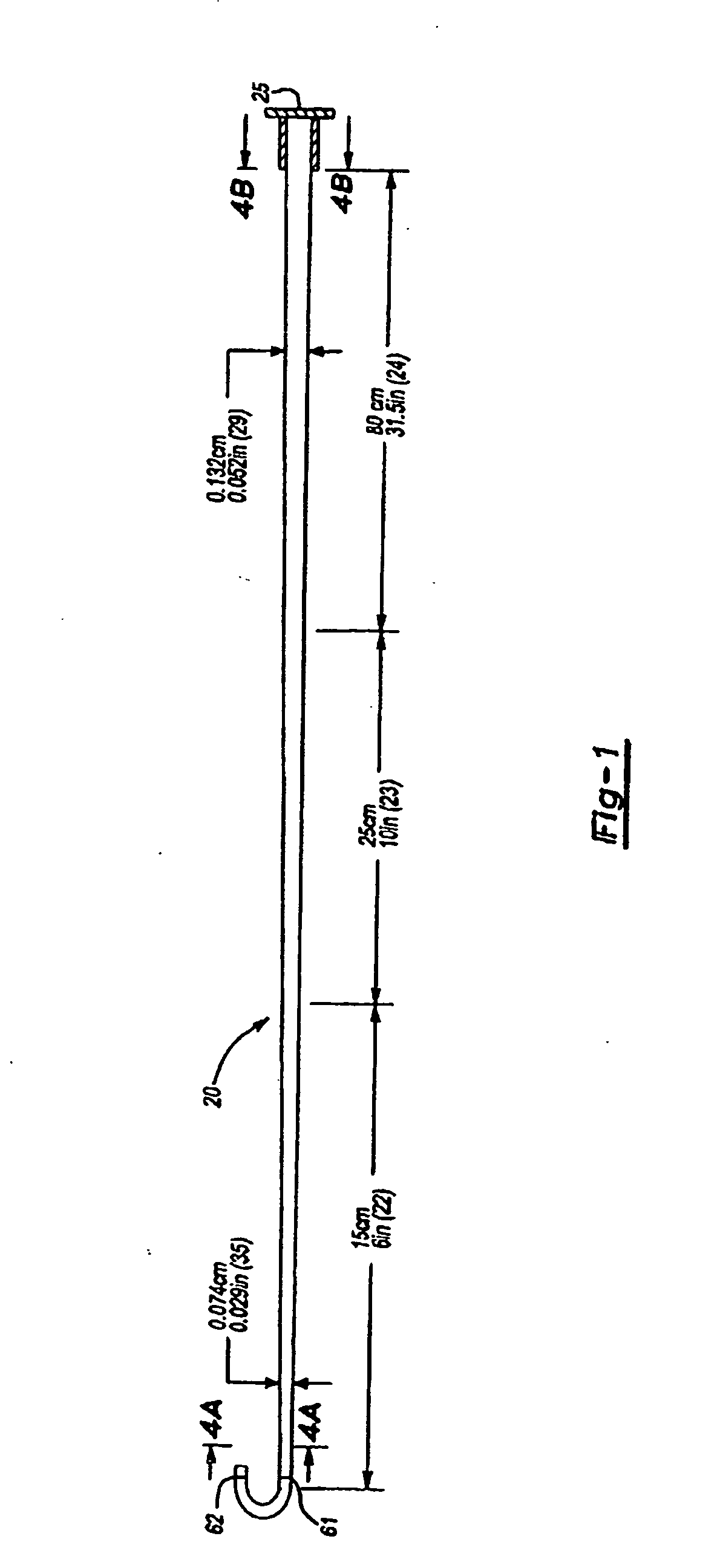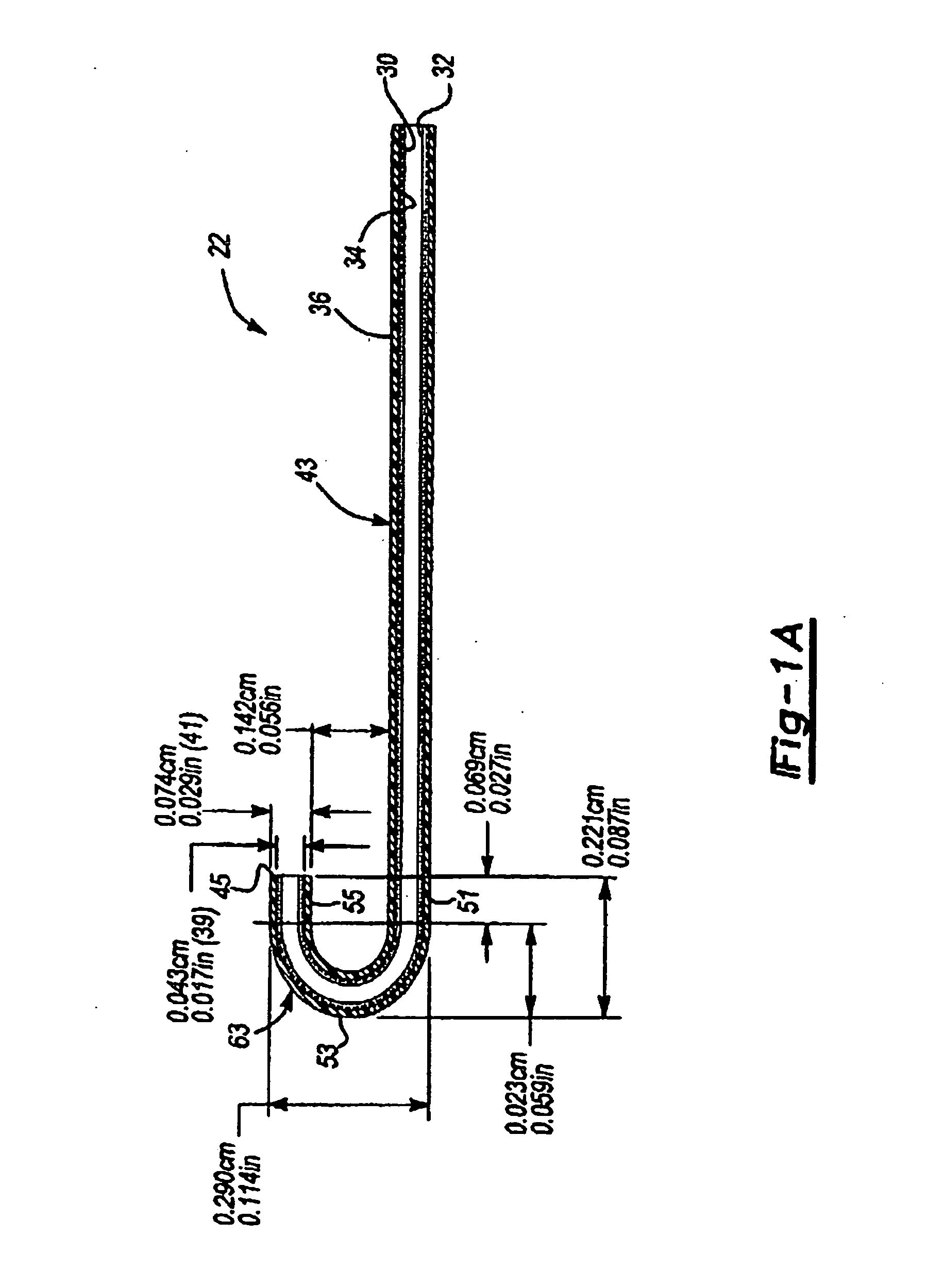Catheter with flexible tip and shape retention
a catheter and flexible technology, applied in the direction of guide wires, medical devices, other medical devices, etc., can solve the problems of affecting the patient's comfort, whipping, torque, etc., and achieve the effect of reducing patient discomfort, reducing device manipulation time, and simple design
- Summary
- Abstract
- Description
- Claims
- Application Information
AI Technical Summary
Benefits of technology
Problems solved by technology
Method used
Image
Examples
Embodiment Construction
[0022] The present invention is a catheter with a flexible tip and shape retention and a method to guide the catheter through small body passages such as coronary arteries including those at acute angles. The present catheter is small enough to fit within the arteries of a human heart, having a soft flexible pre-formed distal tip with a curvature of ninety degrees or greater, that when used in combination with a variable stiffness guidewire, allows the adjustment of the distal end of the guidewire to be aimed at and directed into the branches of a blood vessel. The catheter tip must be flexible enough to allow it to be straightened by the stiff portion of the guidewire, yet have shape retention memory to return to its original curvature of ninety degrees or greater even when a soft portion of the guidewire is present within the lumen of the catheter. In general, the present invention catheter can direct a guidewire by combining the plural forces of a variable stiffness guidewire and...
PUM
 Login to View More
Login to View More Abstract
Description
Claims
Application Information
 Login to View More
Login to View More - R&D
- Intellectual Property
- Life Sciences
- Materials
- Tech Scout
- Unparalleled Data Quality
- Higher Quality Content
- 60% Fewer Hallucinations
Browse by: Latest US Patents, China's latest patents, Technical Efficacy Thesaurus, Application Domain, Technology Topic, Popular Technical Reports.
© 2025 PatSnap. All rights reserved.Legal|Privacy policy|Modern Slavery Act Transparency Statement|Sitemap|About US| Contact US: help@patsnap.com



